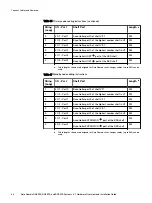
8. Generate an autosupport sent to yourself to use as ACG input:
#
autosupport send [email protected]
OK: Message sent.
Configure HA
Before you begin
l
The HA interconnect between both nodes is connected.
Note
Connecting the HA interconnect
on page 69 describes how to cable the HA
interconnect.
l
The data connections on both nodes are connected.
Configure the two nodes as an HA pair.
Note
Configuring an HA pair sets the system password on the standby node to match the
system password on the active node, however, that synchronization is not set until
the HA configuration is complete. If the HA configuration fails, or if there is a need to
access either node before the HA configuration is complete, use the serial number of
each node as the password.
Procedure
1. Identify which node will serve as the primary node.
2. On the primary node, create the HA pairing.
Run the following command:
ha create peer {<ipaddr> | <hostname>} [ha-name <ha-
system-name]
Note
l
Specify the hostname or the IP address of the standby node.
l
Specifying an HA system name:
n
Assigns node 0 the local hostname
<HA-system-name>-p0.
n
Assigns node 1 the local hostname
<HA-system-name>-p1.
l
The
ha create
command will fail if one node is configured to use DHCP
and the other node is configured to use static IP addresses. Both nodes
must use the same method to configure IP addresses.
ha create peer mysystem-p1.emc.com ha-name mysystem.emc.com
Both nodes reboot, and are configured as an HA pair when they come back up.
3. On the primary node, configure one or more floating IP addresses for data
access.
Run the following command:
net config
<interface-name> <IP address>
netmask
<netmask>
type floating
Configure System for Use
78
Data Domain DD6300, DD6800, and DD9300 Systems
6.1
Hardware Overview and Installation Guide

















